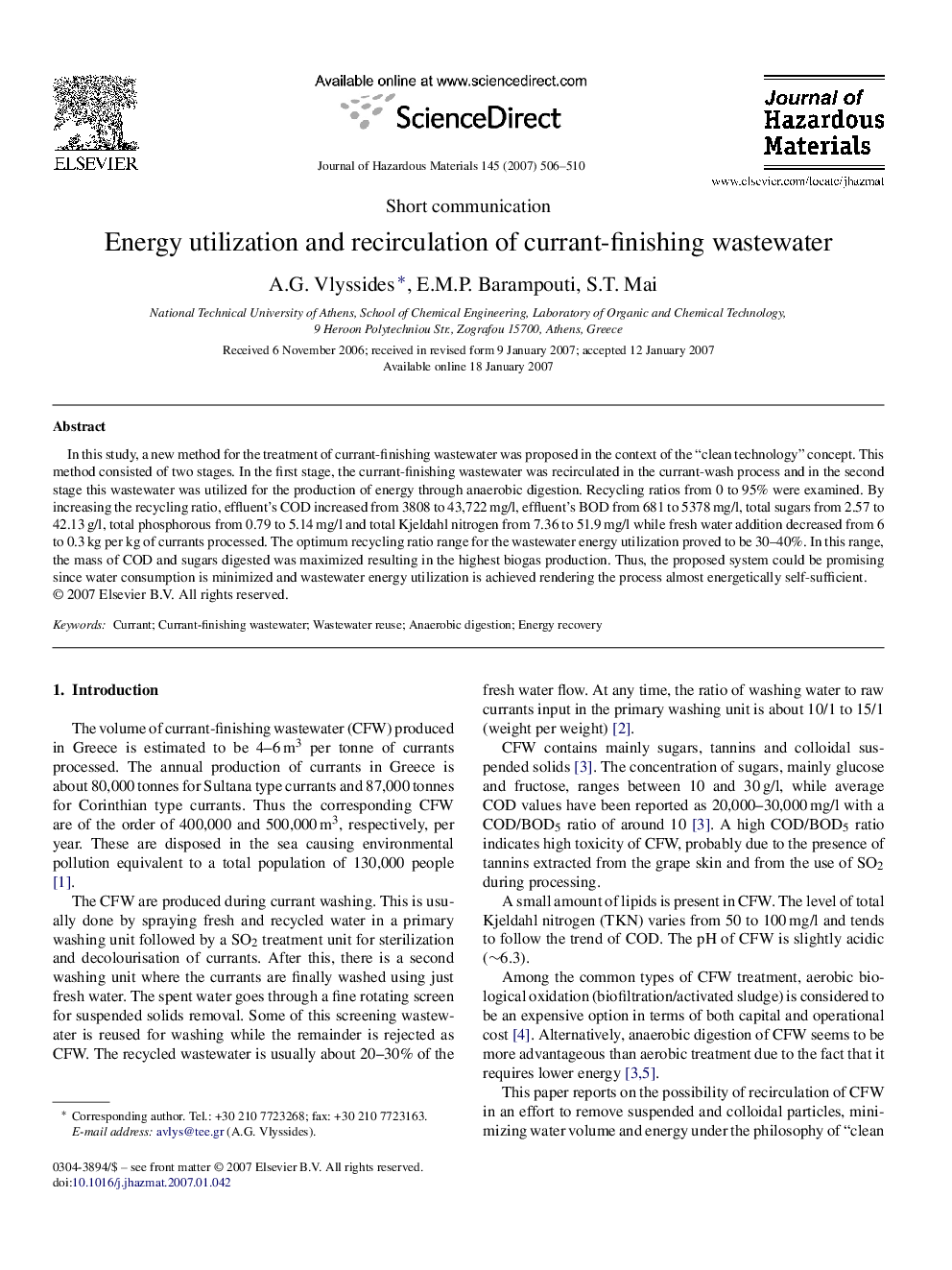| Article ID | Journal | Published Year | Pages | File Type |
|---|---|---|---|---|
| 584333 | Journal of Hazardous Materials | 2007 | 5 Pages |
Abstract
In this study, a new method for the treatment of currant-finishing wastewater was proposed in the context of the “clean technology” concept. This method consisted of two stages. In the first stage, the currant-finishing wastewater was recirculated in the currant-wash process and in the second stage this wastewater was utilized for the production of energy through anaerobic digestion. Recycling ratios from 0 to 95% were examined. By increasing the recycling ratio, effluent's COD increased from 3808 to 43,722Â mg/l, effluent's BOD from 681 to 5378Â mg/l, total sugars from 2.57 to 42.13Â g/l, total phosphorous from 0.79 to 5.14Â mg/l and total Kjeldahl nitrogen from 7.36 to 51.9Â mg/l while fresh water addition decreased from 6 to 0.3Â kg per kg of currants processed. The optimum recycling ratio range for the wastewater energy utilization proved to be 30-40%. In this range, the mass of COD and sugars digested was maximized resulting in the highest biogas production. Thus, the proposed system could be promising since water consumption is minimized and wastewater energy utilization is achieved rendering the process almost energetically self-sufficient.
Related Topics
Physical Sciences and Engineering
Chemical Engineering
Chemical Health and Safety
Authors
A.G. Vlyssides, E.M.P. Barampouti, S.T. Mai,
